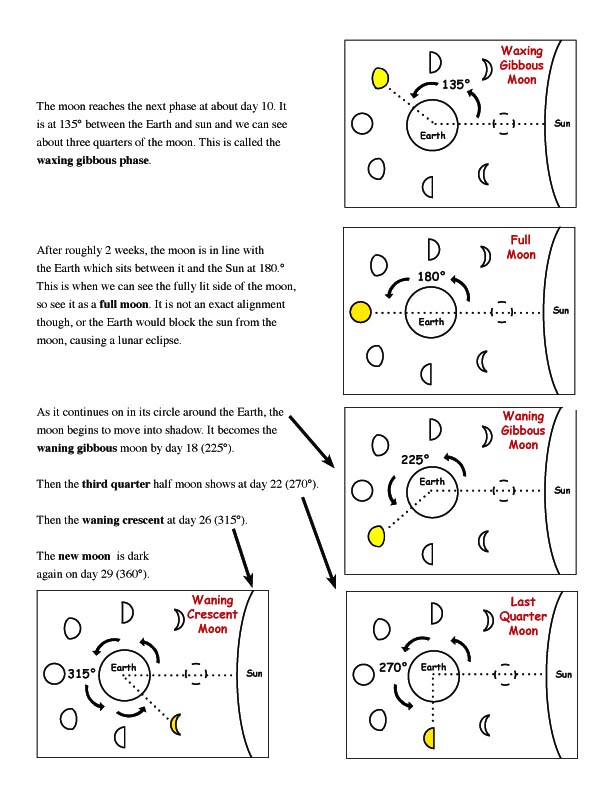

Focus Questions:
How do the Earth, Sun and Moon work together to create different lunar phases?
Why do the phases of the moon occur?
Introductory Activities to Assess Prior Knowledge:
What do we know about the moon? Activity
– How many shapes of the moon have you seen?
– Why do you think the moon changes shape? Is there a pattern?
– How often do you think the moon changes shape?
– Why do you think the face of the moon is always the same if both the Earth and moon are spinning on their axis (rotating)?
Try the Phases of the Moon - Correct Order Cut and Paste.
Introducing New Knowledge:
Read the Phases of the Moon - An Illustrated Explanation below.
/graphics/space/Moon_Phases_NGSS_Integration.pdf
NGSS and Common Core Integration
MS-ESS1-1 Earth’s Place in the Universe
Disciplinary Core Ideas:
ESS1.A: The Universe and Its Stars
• Patterns of the apparent motion of the sun, the moon, and stars in the sky can be observed, described, predicted, and explained with models.
ESS1.B: Earth and the Solar System
• This model of the solar system can explain eclipses of the sun and the moon. Earth’s spin axis is fixed in direction over the short-term but tilted relative to its orbit around the sun. The seasons are a result of that tilt and are caused by the differential intensity of sunlight on different areas of Earth across the year.
Crosscutting Concepts:
Patterns
• Patterns can be used to identify cause-and-effect relationships.
Science and Engineering Practices:
Developing and Using Models
Modeling in 6–8 builds on K–5 experiences and progresses to developing, using, and revising models to describe, test, and predict more abstract phenomena and design systems.
• Develop a model to describe phenomena.
Performance Expectations:
Students who demonstrate understanding can:
MS-ESS1-1. Develop and use a model of the Earth-sun-moon system to describe the cyclic patterns of lunar phases, eclipses of the sun and moon, and seasons. [Clarification Statement: Examples of models can be physical, graphical, or conceptual.]
Common Core State Standards Connections:
ELA/Literacy -
SL.8.5 Integrate multimedia and visual displays into presentations to clarify information, strengthen claims and evidence, and add interest.(MS-ESS1-1)
When you research information you must cite the reference. Citing for websites is different from citing from books, magazines and periodicals. The style of citing shown here is from the MLA Style Citations (Modern Language Association).
When citing a WEBSITE the general format is as follows.
Author Last Name, First Name(s). "Title: Subtitle of Part of Web Page, if appropriate." Title: Subtitle: Section of Page if appropriate. Sponsoring/Publishing Agency, If Given. Additional significant descriptive information. Date of Electronic Publication or other Date, such as Last Updated. Day Month Year of access < URL >.
Amsel, Sheri. "Phases of the Moon - An Illustrated Explanation" Exploring Nature Educational Resource ©2005-2024. December 14, 2024
< http://www.exploringnature.org/db/view/Phases-of-the-Moon-An-Illustrated-Explanation >


